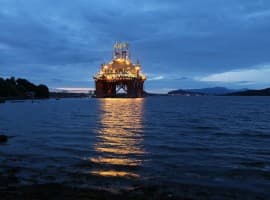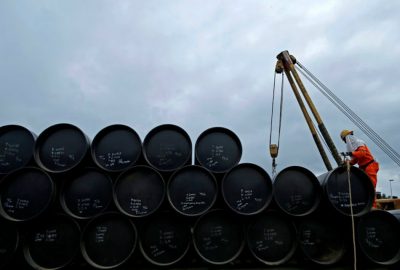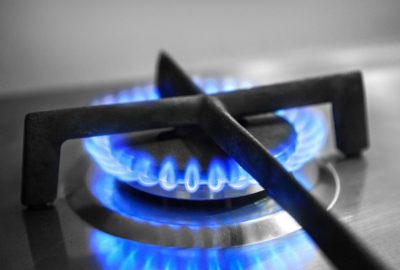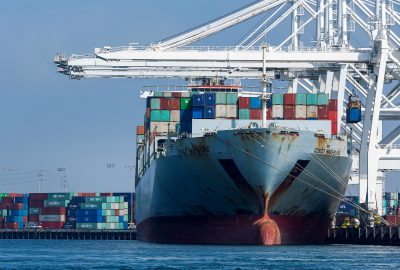
Last week, the OPEC+ group held its latest meeting and decided to extend a raft of production cuts, OPEC’s website highlighted.
In an oil market update focusing on the OPEC+ meeting, which was sent to Rigzone following the gathering, Rystad Energy’s global head of oil commodity markets, Mukesh Sahdev, said the overall signal to the market is constructive and will likely prevent any price downsides in the short term.
But what would have happened to the oil price if OPEC+ didn’t extend its production cuts?
Answering the question, Diana Furchtgott-Roth – Director, Center for Energy, Climate, and Environment, and The Herbert and Joyce Morgan Fellow in Energy and Environmental Policy, at the Heritage Foundation – highlighted to Rigzone that “the price would have been lower”.
When asked the same question, Jamie Webster, Partner & Associate Director at the Boston Consulting Group’s Center for Energy Impact, told Rigzone that, “without a delay, prices will likely fall”, adding that “it also depends on the pace they decide to put these barrels on the market and how it is communicated”.
“While the outcome appears clear, the organization has a history of surprises – uncertainty is lower but is not removed entirely,” Webster warned.
Rigzone also asked the Heritage Foundation and Boston Consulting Group representatives if there was there any possibility of OPEC+ not extending its production cuts at the December meeting.
While Webster didn’t directly address the question, Furchtgott-Roth told Rigzone that, if Kamala Harris had won the election in the United States and if Chinese demand had picked up, then OPEC+ might have ended the cuts.
Rigzone also questioned Furchtgott-Roth and Webster about what they think will happen at the next OPEC+ meeting, which is currently scheduled for May.
“I don’t see the outlook being any better in May,” Furchtgott-Roth said.
“First, President Trump has said that he will open up more U.S. oil and gas production with both offshore and onshore leases. Second, tariffs from President Trump may lead to reduced demand from China. Third, some deal between Russia and Ukraine may lead to an end in the fighting and movement of borders in exchange for taking off Russian sanctions – leading to more Russian oil sales,” Furchtgott-Roth added.
“All this will place downward pressure on oil prices. On the other hand, if existing Iran sanctions that were put in place in October are enforced, that could take some oil off the market, alleviating downward price pressure,” the Heritage Foundation representative continued.
Webster told Rigzone that, by May, he anticipates that OPEC+ will have a new strategy in place to start getting its barrels back onto the market.
Saxo Bank, S&P, BofA Views
In a note sent to Rigzone on December 6 by the Saxo Bank team, Ole S. Hansen, Saxo Bank’s Head of Commodity Strategy, said the main event of that week in commodities was the OPEC+ meeting, stating that the group “delayed further to mitigate the risk of price weakness amid the release of currently unwanted barrels”.
“This decision was underpinned by concerns about robust production from non-OPEC+ producers next year, potentially leading to a major crude surplus and, from OPEC’s perspective, undesirable price weakness,” Hansen added.
“In the short term, the combination of elevated OPEC spare capacity and rising production elsewhere – not least in the U.S., where output has reached a record 13.5 million barrels per day – has reduced the likelihood of an upside price movement,” Hansen continued.
The Saxo Bank representative added in the note, however, that some upside risks remain.
“These include the Trump administration potentially adding fresh sanctions on Iran and Venezuela, as well as geopolitical risks stemming from the Russia-Ukraine war and the Middle East conflict,” he said.
Hansen also highlighted in the note that “a proposal by Treasury Secretary nominee Scott Bessent to increase U.S. production by three million barrels of oil equivalent through 2028 will likely center on increased natural gas and natural gas liquids production”.
“With WTI trading below $70, however, incentives for further production increases remain constrained,” he added.
Also in the note, Hansen pointed out that Brent and WTI crude oil futures “have traded sideways over the past two years as OPEC successfully managed to reduce volatility while supporting prices during a period of softening demand in China”.
“Brent support … is found near $70 per barrel, followed by $65 per barrel, while the downtrend from 2022 currently provides resistance near $80 per barrel,” he added.
In an OPEC+ meeting analysis piece sent to Rigzone by S&P Global, Bhushan Bahree, Executive Director, S&P Global Commodity Insights, said “this is a ‘déjà vu, again’ moment”.
“OPEC+ member countries would like to start increasing oil production without negatively impacting prices. They cannot do that just yet,” Bahree added.
Paul Tossetti, Executive Director, S&P Global Commodity Insights, stated in that analysis piece that the message to the market seems to be the same as before.
“OPEC+ countries are willing to at least stay the course – even if disinclined to cut output further – to support prices by continuing to restrain their output for longer if necessary, at least for a time, anyway,” he added.
“At the same time, with OPEC+ poised to raise supply whenever market conditions do allow, the potential for higher prices is limited,” he continued.
A BofA Global Research report sent to Rigzone on December 6 highlighted that OPEC+ “record spare capacity stays in the ground for longer – covering its Achilles heel of insufficient demand growth with more sticking plaster while awaiting help from more Chinese stimulus and/or a slowdown in the energy transition in favour of oil consumption”.
The report pointed out that BofA’s Commodities Research team’s 2025 oil market outlook “already assumes further delays in OPEC+ increasing production”.
“They forecast increasing oil surpluses drive Brent oil prices to average $65 per barrel – without expecting any net increase in OPEC+ production in 2025,” it added.
“Their ~one million barrel per day global demand growth forecast is exceeded by non-OPEC production growth of closer to 1.5 million barrels per day – suggesting current 2025 strip near $72 per barrel already prices some upside risk from geopolitical disruptions (including more sanctions on Iran exports) and/or delays to non-OPEC production growth,” it continued.
To contact the author, email











